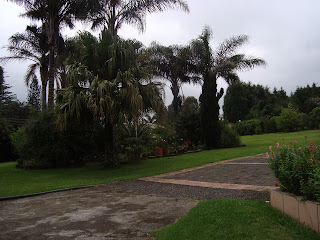

Before any anthropological study of the human remains can be undertaken, the bones need to be properly cleaned, identified, and catalogued. The cleaning process is fairly straightforward: the bones are washed with water and a soft brush is used to remove any dirt and small roots still adhering to them. The bones are then laid out on newspaper for a couple of days to air dry (not a problem here in Swaziland with the intense heat).
Once the remains are completely dry, the human bones are separated from the non-human (or animal) bones. In many cases this is a relatively easy task because many parts of the human skeleton are very distinctive. However, when the bones are fragmentary (or broken into a number of smaller pieces) it may be quite difficult to determine if the remains are those of a human or another animal. This is due to in part to the fact that humans share the same types of bones (such as arm and leg bones, ribs, and vertebrae) with many animals, particularly other mammals.
The next step in the documentation process is to refit bone fragments together. Again, this can be relatively easy to accomplish when bones have only been broken into two or three large pieces. However, when bones are highly fragmentary and consist of numerous pieces, sometimes smaller than a dime, this can be quite challenging. It is often like trying to put together a jigsaw puzzle, but with some of the pieces missing. Once the bones are reassembled, each human bone or bone fragment is identified, if possible, as to the type of bone (femur, humerus, mandible) and to which side of the body (left or right).











.JPG)
.JPG)
.JPG)
.JPG)
















